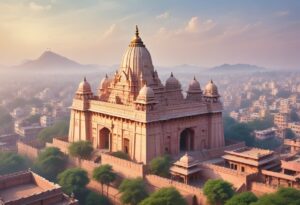The human brain, an extraordinary organ encased within the protective confines of the skull, stands as one of nature’s most awe-inspiring creations. Its intricate architecture, composed of billions of neurons intricately interconnected, orchestrates the symphony of human cognition, behavior, and consciousness. Despite being concealed from view, the anatomy of the brain offers profound insights into the essence of humanity itself. In this comprehensive exploration, we venture into the labyrinthine corridors of the brain, delving deep into its complex structures and functions.
At the core of our understanding lies the fundamental unit of the nervous system: the neuron. These remarkable cells serve as the building blocks of the brain, transmitting electrical impulses and forming elaborate networks that underpin every aspect of human experience. From the simplest reflex to the most intricate thought process, neurons play a pivotal role in shaping our reality.
Nestled within the folds of the cerebral cortex, the outermost layer of the brain, lies the seat of higher cognitive functions. This remarkable structure, comprising distinct regions dedicated to sensory perception, motor control, language, and executive functions, embodies the essence of human intellect. Through intricate networks of neurons, the cerebral cortex processes sensory information, interprets language, and orchestrates complex behaviors, offering a glimpse into the remarkable capabilities of the human mind.
Beneath the surface, the limbic system exerts its influence, regulating emotions, memory, and instinctual behaviors. At its heart lies the amygdala, a small almond-shaped structure with profound implications for emotional processing and fear conditioning. Alongside the hippocampus, this complex network of structures forms the emotional core of the brain, shaping our responses to the world around us and encoding memories that define our personal narrative.
Descending deeper into the brain, we encounter the intricate circuitry of the brainstem and cerebellum, essential for vital functions such as breathing, heart rate, and balance. These ancient structures, often overlooked in discussions of higher cognition, serve as the foundation upon which consciousness itself rests. From regulating basic physiological processes to coordinating intricate movements, the brainstem and cerebellum represent the silent guardians of human existence.
As we navigate the terrain of the brain, we encounter countless mysteries yet to be unraveled. From the enigmatic depths of the thalamus to the intricate pathways of the basal ganglia, each structure holds its secrets, waiting to be discovered by intrepid explorers of the mind. Through a combination of cutting-edge research and technological innovation, scientists continue to peel back the layers of complexity, shedding light on the inner workings of the brain and the mysteries of human consciousness.
In the pages that follow, we embark on a journey of discovery, guided by the intricate map of the brain’s anatomy. From its outermost reaches to its deepest recesses, we unravel the mysteries of the human mind, gaining insight into the essence of what it means to be human. As we venture forth into the unknown, let us marvel at the wonders of the brain, a testament to the boundless potential of the human spirit.
The Three Major Divisions:
The brain is divided into three main parts: the forebrain, midbrain, and hindbrain. Each division plays a crucial role in regulating various bodily functions and cognitive processes.
1. Forebrain:
Among the three major divisions of the brain, the forebrain commands attention as the largest and most intricate. Comprising the cerebrum and the diencephalon, this division orchestrates a multitude of essential functions that underpin human cognition and behavior.
Cerebrum: At the helm of the forebrain sits the cerebrum, a sprawling expanse of neural tissue revered for its role in governing higher brain functions. Tasked with overseeing voluntary movement, sensory perception, language processing, and more, the cerebrum stands as a testament to the complexity of human neurobiology. Its structure is characterized by a bilateral symmetry, divided into two hemispheres—the left and right—each entrusted with distinct responsibilities. Within these hemispheres lie four lobes, each intricately woven into the tapestry of human experience:
- Frontal Lobe: Positioned at the forefront of the cerebrum, the frontal lobe assumes responsibility for executive functions, including decision-making, planning, and problem-solving. Additionally, it serves as the command center for voluntary muscle movements, enabling individuals to navigate their environment with precision and purpose.
- Parietal Lobe: Nestled between the frontal and occipital lobes, the parietal lobe plays a pivotal role in sensory processing and spatial awareness. By integrating sensory information from various modalities, it allows individuals to perceive the world around them and navigate their surroundings with ease.
- Temporal Lobe: Situated beneath the lateral fissure, the temporal lobe is primarily associated with auditory perception, language comprehension, and memory consolidation. Within its convoluted folds lie vital structures such as the auditory cortex and hippocampus, which contribute to the formation and retrieval of memories.
- Occipital Lobe: Positioned at the rear of the cerebrum, the occipital lobe is dedicated to visual processing and interpretation. Housing the primary visual cortex, it deciphers incoming visual stimuli, allowing individuals to perceive shapes, colors, and motion with remarkable clarity.
Diencephalon: Beneath the expansive canopy of the cerebrum lies the diencephalon, a compact yet indispensable collection of structures that regulate vital aspects of human physiology and behavior.
- Thalamus: Serving as the brain’s relay station, the thalamus acts as a conduit for sensory information, transmitting signals from the peripheral nervous system to the cerebral cortex. By filtering and prioritizing incoming sensory inputs, it facilitates coherent perception and conscious awareness of the surrounding environment.
- Hypothalamus: Nestled beneath the thalamus, the hypothalamus assumes control over a diverse array of autonomic functions, endocrine secretion, and behavioral responses. From regulating hunger, thirst, and body temperature to orchestrating the body’s stress response and circadian rhythms, its influence extends far beyond its modest size.
- Epithalamus: Though diminutive in comparison to its counterparts, the epithalamus plays a crucial role in regulating sleep-wake cycles and modulating emotional responses. Within its confines lie the pineal gland, which secretes melatonin, a hormone instrumental in regulating the body’s circadian rhythms and promoting restful sleep.
In summary, the forebrain stands as a testament to the remarkable complexity and versatility of the human brain. Through its constituent structures—the cerebrum and diencephalon—it governs a diverse array of cognitive processes, emotional responses, and physiological functions, shaping the essence of human experience in profound and multifaceted ways.
2. Midbrain:
Nestled snugly between the towering structures of the forebrain and hindbrain, the midbrain emerges as a vital hub of neural activity, orchestrating a symphony of sensory processing, motor coordination, and arousal mechanisms essential for navigating the complexities of the world.
As a crucial conduit for motor and sensory pathways, the midbrain serves as the neural highway connecting higher brain centers with the spinal cord and peripheral nervous system. Through its intricate network of neurons and axonal projections, it facilitates the swift transmission of signals essential for executing voluntary movements and processing sensory information.
One of the midbrain’s primary functions lies in sensory processing, where it assumes the role of chief integrator for auditory and visual stimuli. Positioned at the crossroads of sensory pathways, it harmonizes incoming sensory inputs, allowing for the seamless interpretation of auditory and visual information. Whether it be the chirping of birds in the distance or the flicker of movement in one’s peripheral vision, the midbrain acts as a neural maestro, coordinating responses to the surrounding environment with remarkable precision.
Moreover, the midbrain plays a pivotal role in regulating sleep-wake cycles, overseeing the delicate balance between periods of rest and wakefulness. Situated at the interface between the forebrain and hindbrain, it receives input from higher brain centers involved in circadian rhythm regulation, modulating arousal mechanisms accordingly. Through its intricate neural circuits, the midbrain ensures the seamless transition between different states of consciousness, allowing individuals to navigate the ebbs and flows of daily life with ease.
Beyond its role in sensory processing and sleep regulation, the midbrain serves as a nexus for reflex actions—a cornerstone of the body’s defensive mechanisms. Through specialized neuronal pathways, it coordinates rapid and automatic responses to external stimuli, ensuring swift reactions to potential threats or dangers. Whether it be the involuntary flinch in response to a sudden loud noise or the reflexive dilation of pupils in dim lighting, the midbrain acts as a vigilant sentinel, safeguarding the body from harm.
The midbrain emerges as a pivotal center of neural integration, bridging the gap between higher cognitive functions and basic physiological processes. Through its role in sensory processing, sleep regulation, and reflex actions, it facilitates the seamless coordination of behaviors essential for survival and adaptation. As a testament to the remarkable complexity of the human nervous system, the midbrain embodies the intricate interplay between mind and body, illuminating the profound interconnectedness of neural processes underlying human experience.
3. Hindbrain:
Nestled at the base of the brain, beneath the sprawling expanse of the forebrain and midbrain, lies the hindbrain—a critical nexus of neural activity essential for maintaining balance, coordinating movement, and regulating vital autonomic functions. Comprising three distinct structures—the cerebellum, pons, and medulla oblongata—the hindbrain serves as the cornerstone upon which the body’s physiological equilibrium rests.
Cerebellum: Often hailed as the “little brain,” the cerebellum belies its diminutive size with an outsized role in shaping human movement and cognition. Positioned posterior to the cerebrum, this intricate structure orchestrates a symphony of neural signals to ensure the smooth execution of voluntary movements, fine-tuning motor commands with unparalleled precision. Through its intricate neural circuits, the cerebellum coordinates muscle contractions, modulates balance and posture, and refines motor skills with each repetition—a testament to its role in facilitating motor learning and skill acquisition. Moreover, emerging evidence suggests that the cerebellum’s influence extends beyond the realm of movement, encompassing cognitive functions such as language processing, attention, and executive control, further underscoring its status as a multifaceted hub of neural integration.
Pons: Positioned anterior to the cerebellum, the pons serves as a vital conduit for communication between disparate regions of the brain, forging neural pathways that facilitate seamless coordination of motor and sensory information. As a pivotal link between the cerebrum, cerebellum, and spinal cord, the pons enables the exchange of information essential for executing complex motor tasks, integrating sensory feedback, and regulating vital functions such as respiration and sleep. Moreover, the pons harbors nuclei that play a crucial role in modulating arousal, facilitating transitions between different states of consciousness—a function of paramount importance in maintaining cognitive flexibility and adaptive behavior.
Medulla Oblongata: Situated at the caudal end of the brainstem, the medulla oblongata serves as the final arbiter of vital autonomic functions, overseeing a diverse array of physiological processes essential for sustaining life. From regulating cardiovascular activity and respiratory rhythm to coordinating digestive processes and controlling reflexive responses, the medulla oblongata embodies the essence of homeostasis—a delicate balance maintained through the intricate interplay of neural circuits and biochemical signaling. Additionally, the medulla houses vital nuclei responsible for reflex actions such as coughing, sneezing, and swallowing, underscoring its pivotal role in preserving the integrity of the body’s internal milieu.
The hindbrain stands as a testament to the remarkable intricacy and resilience of the human nervous system. Through its constituent structures—the cerebellum, pons, and medulla oblongata—it governs a diverse array of physiological functions, coordinates complex motor behaviors, and ensures the preservation of vital autonomic processes essential for sustaining life. As the foundation upon which higher cognitive functions and conscious awareness rest, the hindbrain serves as a linchpin in the intricate tapestry of human neurobiology, embodying the profound interconnectedness of mind and body.
Structural Components:
Beneath the surface of the brain’s major divisions lie an intricate array of structural components, each with its own specialized functions, contributing to the remarkable complexity and functionality of the nervous system.
Neurons: At the very heart of the brain’s operation are neurons, the fundamental units of the nervous system. These specialized cells possess the remarkable ability to transmit electrical signals, known as action potentials, across their length. Through intricate networks of interconnected neurons, information is processed, integrated, and relayed throughout the brain and the rest of the body. Neurons come in various shapes and sizes, each tailored to perform specific functions within the neural circuitry. From the sensory neurons that detect external stimuli to the motor neurons that orchestrate movement, the diversity of neurons underpins the breadth and depth of human experience.
Glial Cells: While neurons often steal the spotlight, the brain’s functionality would be severely compromised without the support of glial cells. These unsung heroes of the nervous system provide structural support to neurons, insulate them with myelin, and regulate the chemical environment of the brain. Glial cells come in several forms, including astrocytes, oligodendrocytes, and microglia, each serving a distinct yet vital role in maintaining the health and functionality of the nervous system. Astrocytes, for instance, play a crucial role in regulating neurotransmitter levels and maintaining the blood-brain barrier, while oligodendrocytes are responsible for producing myelin, a fatty substance that enhances the speed of neuronal transmission.
White Matter: Interwoven within the brain’s intricate architecture is white matter, a dense network of myelinated axons that facilitate communication between different regions of the brain. Myelin, a fatty substance produced by oligodendrocytes, wraps around axons, forming an insulating sheath that accelerates the speed of neuronal transmission. By enhancing the efficiency of signal propagation, white matter ensures swift and coordinated communication between distant brain regions, enabling complex cognitive processes and motor behaviors to unfold seamlessly. Tracts of white matter crisscross the brain, forming intricate neural pathways that serve as conduits for information transfer, linking sensory inputs with motor outputs and connecting disparate regions involved in higher-order cognition.
Gray Matter: Complementing the ethereal white matter is the gray matter, a rich tapestry of neuronal cell bodies, dendrites, and unmyelinated axons that form the computational core of the brain. Within the convoluted folds of the cerebral cortex, gray matter abounds, playing a crucial role in information processing and decision-making. It is here, within the depths of the cortex, that sensory inputs are integrated, memories are encoded, and complex thoughts are conceived. While white matter serves as the neural superhighway, facilitating long-distance communication, gray matter embodies the essence of neural computation, orchestrating the intricate dance of synaptic connections that underpins human cognition and behavior.
In summary, the brain’s structural components—from neurons and glial cells to white and gray matter—collaborate in a symphony of neural activity, shaping the intricacies of human experience. Through their collective efforts, information is processed, memories are formed, and behaviors are executed, illuminating the remarkable complexity and adaptability of the human brain. As we unravel the mysteries of these structural components, we gain a deeper appreciation for the intricate interplay of cells and circuits that underlie the marvel of human cognition and consciousness.
Functional Regions:
At the core of the brain’s organization lies a mosaic of specialized functional regions, each meticulously crafted to fulfill a specific role in orchestrating the symphony of human cognition and behavior. From the intricate choreography of voluntary movements to the nuanced processing of sensory stimuli, these regions form the backbone of neural processing, shaping the rich tapestry of human experience.
Motor Cortex: Nestled within the frontal lobe, the motor cortex stands as the sentinel of voluntary movement, commanding the body’s musculature with precision and finesse. Comprising the primary motor cortex and supplementary motor areas, this region serves as the neural command center for executing motor commands initiated by higher cognitive processes. Through a complex interplay of neural circuits, the motor cortex translates abstract intentions into concrete actions, orchestrating movements ranging from the delicate manipulation of objects to the graceful execution of athletic feats.
Somatosensory Cortex: Positioned within the parietal lobe, the somatosensory cortex serves as the gateway to tactile perception, processing sensory information related to touch, temperature, and pain. Through an intricate network of neurons, this region deciphers the nuances of sensory inputs, enabling individuals to perceive and respond to the myriad sensations that define tactile experience. Whether it be the gentle caress of a loved one’s hand or the searing pain of a burn, the somatosensory cortex plays a crucial role in shaping our subjective experience of the world.
Visual Cortex: Enveloped within the occipital lobe, the visual cortex reigns supreme as the primary gateway to visual perception, processing the rich tapestry of visual stimuli received from the eyes. Through a series of specialized processing pathways, this region dissects incoming visual inputs, extracting critical features such as shape, color, and motion. From the serene beauty of a sunset to the intricate details of a microscopic organism, the visual cortex transforms raw visual data into coherent representations, enabling individuals to navigate and interact with their visual environment with remarkable acuity and precision.
Auditory Cortex: Ensconced within the depths of the temporal lobe, the auditory cortex assumes control over the auditory domain, processing the complex symphony of sounds that permeate our auditory landscape. Through a sophisticated network of neurons, this region disentangles the cacophony of auditory inputs, discerning subtle nuances in pitch, tone, and timbre. From the melodic strains of music to the rhythmic cadence of speech, the auditory cortex lends depth and richness to our auditory experience, allowing us to derive meaning and pleasure from the auditory stimuli that surround us.
Limbic System: Serving as the emotional epicenter of the brain, the limbic system comprises a constellation of structures, including the amygdala, hippocampus, and hypothalamus, that collectively regulate emotions, memory, and motivation. Through intricate neural circuits, this complex network integrates sensory inputs with emotional responses, imbuing our experiences with meaning and significance. Whether it be the thrill of victory or the sting of defeat, the limbic system shapes our emotional landscape, guiding our actions and influencing our decisions in profound and often subconscious ways. Moreover, the limbic system plays a crucial role in memory formation and retrieval, encoding the events of our lives into the fabric of our consciousness and shaping our sense of self.
In summary, the brain’s functional regions represent a marvel of neural architecture, each finely tuned to perform specific tasks essential for human cognition and behavior. From the precise control of movement to the nuanced processing of sensory inputs, these regions collaborate in a symphony of neural activity, shaping the contours of human experience in profound and multifaceted ways. As we unravel the mysteries of these functional regions, we gain insight into the intricate interplay of cells and circuits that underlie the complexity of human cognition and consciousness, illuminating the remarkable adaptability and resilience of the human brain.
The anatomy of the brain stands as a testament to the awe-inspiring complexity and sophistication of the human nervous system. From the intricate web of neurons to the specialized functional regions, every facet of brain anatomy plays a pivotal role in shaping our cognitive abilities, behaviors, and experiences. As we journey through the labyrinthine corridors of the brain, we gain a deeper appreciation for the remarkable intricacies that underpin human consciousness.
At the heart of brain anatomy lies the intricate network of neurons, the building blocks of the nervous system. Through their elaborate connections and electrochemical signaling, neurons orchestrate the symphony of neural activity that underlies every aspect of human cognition and behavior. From the simplest reflex to the most complex thought processes, neurons serve as the conduits through which information flows, forging the foundation upon which the intricacies of the mind are built.
Beyond the individual neurons, the brain is organized into specialized functional regions, each finely tuned to perform specific tasks essential for human experience. Whether it be the motor cortex commanding voluntary movements, the somatosensory cortex deciphering tactile sensations, or the limbic system regulating emotions and memory, these regions collaborate in a symphony of neural activity, shaping the contours of human consciousness in profound and multifaceted ways.
As our understanding of brain anatomy deepens, researchers continue to unlock new insights into the workings of the mind, paving the way for groundbreaking advancements in neuroscience and medicine. Through a combination of cutting-edge technologies, such as functional magnetic resonance imaging (fMRI) and optogenetics, scientists delve into the mysteries of brain structure and function, unraveling the intricate mechanisms that underlie human cognition and behavior.
Moreover, the study of brain anatomy holds immense promise for the development of novel treatments and interventions for neurological and psychiatric disorders. By elucidating the neural underpinnings of conditions such as Alzheimer’s disease, Parkinson’s disease, and schizophrenia, researchers aim to develop targeted therapies that address the underlying causes of these disorders, offering hope to millions of individuals and families affected by these debilitating conditions.
In conclusion, the anatomy of the brain serves as a testament to the remarkable adaptability and resilience of the human nervous system. Through its intricate structure and function, the brain embodies the essence of human consciousness, shaping our thoughts, emotions, and behaviors in profound and transformative ways. As we continue to unravel the mysteries of brain anatomy, we embark on a journey of discovery that promises to unlock the secrets of the mind and revolutionize our understanding of what it means to be human.










More Stories
Inside the Hormonal Symphony: Understanding the Endocrine System
Understanding Gallstones: Causes, Symptoms, and Treatment Options
The Intricacies of Cells: Exploring the Building Blocks of Life